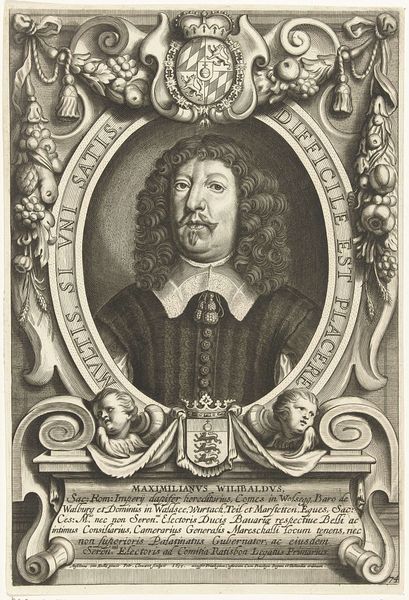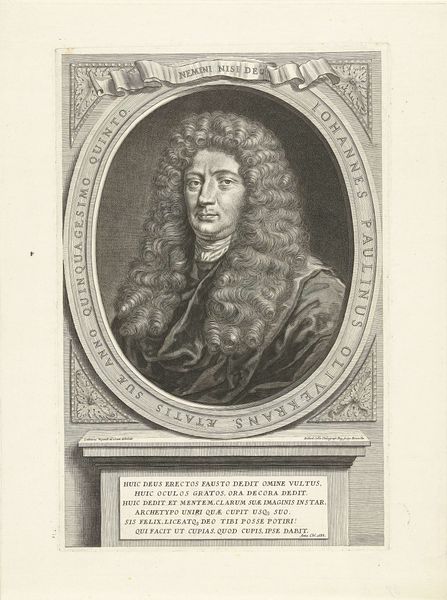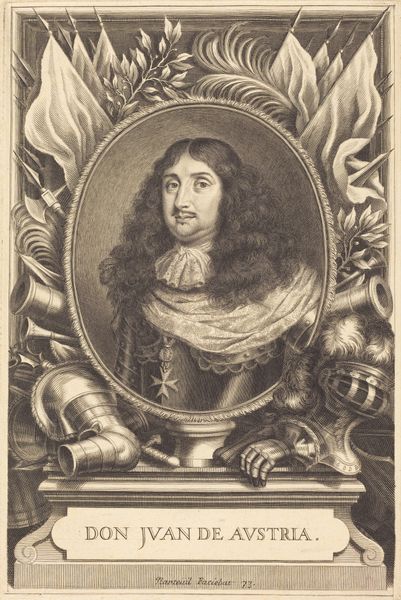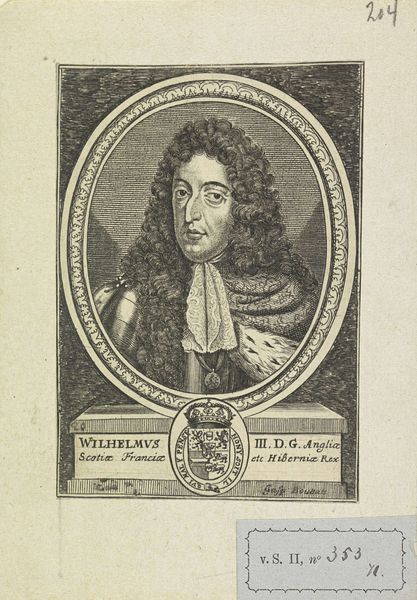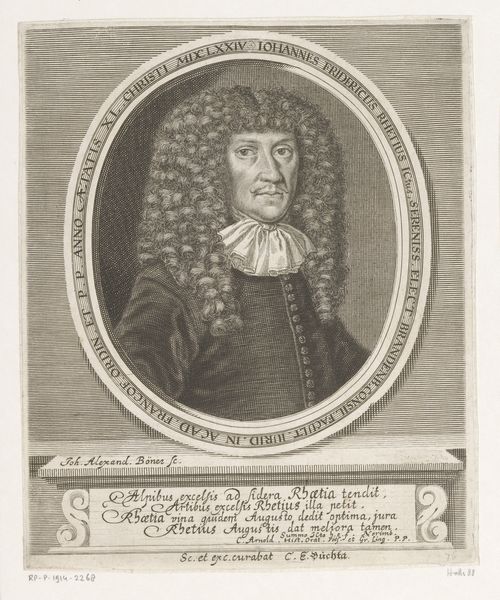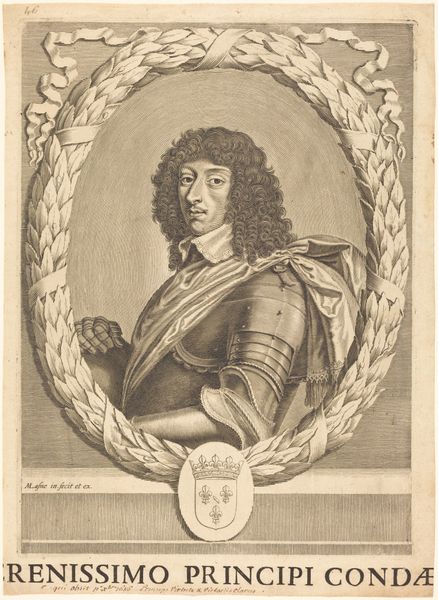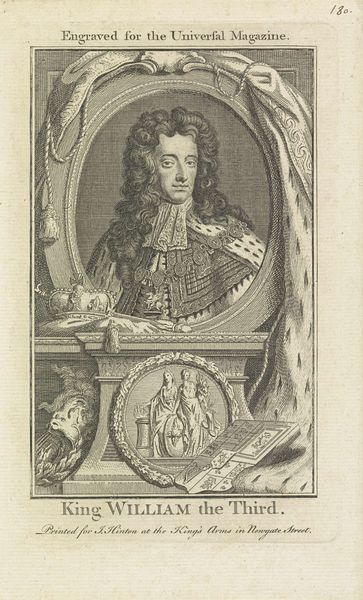
engraving
#
portrait
#
baroque
#
history-painting
#
engraving
Dimensions: height 218 mm, width 159 mm
Copyright: Rijks Museum: Open Domain
Bernardino Curti made this portrait of a man in 1644. Note the dominant motif of the laurel wreath held aloft by cherubic figures—a symbol since antiquity of triumph and eternal life, often linked to Apollo, god of music and poetry. Consider its evolution. In ancient Greece, the wreath crowned victors and poets, a physical embodiment of glory. Here, it floats above the sitter, suggesting an aspiration to higher virtues or achievements. The cherubs themselves, derived from pagan Cupids, now serve a Christian function, acting as divine messengers. Such symbols are not static; they are vessels of cultural memory, passed down and reshaped through generations. The wreath reappears in Roman imperial art, Renaissance paintings, and even modern-day emblems. This enduring power speaks to our collective subconscious—a deep-seated longing for recognition and immortality. The cumulative weight of history embedded in this symbol engages us on an emotional level, stirring echoes of past glories and aspirations. Thus, the wreath's meaning expands, resonating within the viewer's psyche long after the image fades.
Comments
No comments
Be the first to comment and join the conversation on the ultimate creative platform.
